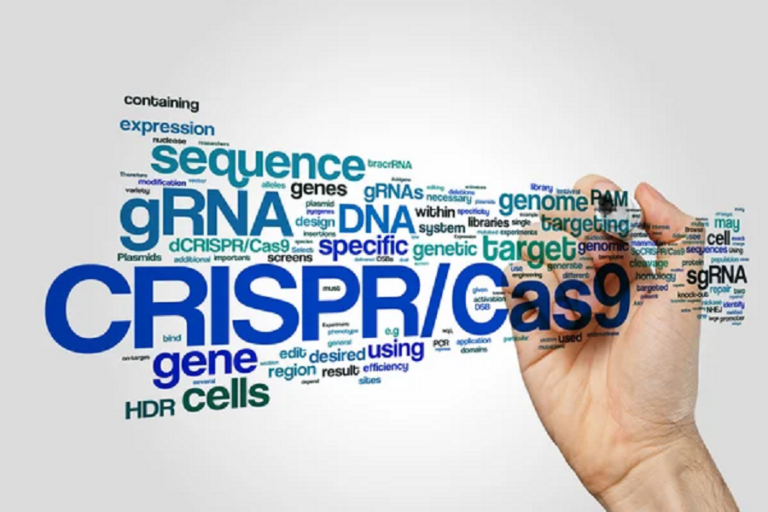Definition of CRISPR
CRISPR stands for Clustered Regularly Interspaced Short Palindromic Repeats. It is a revolutionary gene editing technology that has the potential to revolutionize healthcare, agriculture and other scientific fields.
CRISPR is a tool used by scientists to edit DNA sequences in the genome of living organisms. It works by using an enzyme called Cas9 to cut DNA at specific locations and replace it with new genetic material. This allows for precise editing of genes and can be used to correct genetic diseases as well as create new crops with desirable traits. CRISPR was discovered in 2012 when scientists noticed that bacteria had developed a defense mechanism against viruses called CRISPR-Cas systems.
Since then, scientists have been able to use this technology to modify the genomes of plants, animals, fungi and even humans. For example, researchers have used CRISPR to modify mosquitoes so they can’t transmit malaria or develop antibiotic-resistant bacteria which could help fight infectious diseases such as HIV/AIDS or tuberculosis. The capabilities of CRISPR are vast and still being discovered every day; it has the potential to revolutionize healthcare, agriculture and other scientific fields if it is used responsibly and ethically.
When to Use Optimized Targeting? When determining when to use optimized targeting, it is important to consider your goals.

What do you hope to achieve with your campaign? Are you looking to increase brand recognition? Generate leads? Sell products? Knowing the goals of your campaign will help you identify the best method of targeting.
How to Use CRISPR Optimal Target Finder
CRISPR Optimal Target Finder is a web-based tool that helps researchers design single guide RNAs (sgRNAs) for the CRISPR/Cas9 gene editing system. This tool can be used to identify optimal target sites for efficient and accurate gene editing in the laboratory.
The first step in using CRISPR Optimal Target Finder is to input the sequence of your gene of interest and select the organism you are working with. Then, you can specify any additional constraints such as allowed mismatches or preferred GC content. The program then searches through all available sequences and identifies potential target sites that meet your criteria. From this list, you can select up to five sgRNA sequences which will be used for creating your gene knockout experiment.
Once you have selected your sgRNA sequences, CRISPR Optimal Target Finder provides detailed information about each one including its position within the genome, score, predicted off-target effects, and other annotations such as enzyme recognition sites or restriction fragment lengths. This information enables researchers to make informed decisions when choosing which sgRNAs are most likely to yield successful results in their experiments.
Common Applications for CRISPR Optimal Target Finder
CRISPR Optimal Target Finder (OTF) is an application designed to make the process of finding target sites for CRISPR-mediated gene editing faster and easier. It is a user-friendly, web-based tool that allows researchers to input their desired sequence and quickly find the optimal targets within the sequence. OTF is equipped with algorithms that are specifically tailored to the needs of CRISPR applications, allowing users to find potential target sites in a matter of minutes.
The first step of using OTF involves entering your desired sequence into the application’s interface. The program then scans this input for potential target sites based on specific criteria, such as off-target rate, local complexity score, or even custom settings by the user. Once it has identified these targets it will compile a list of them with detailed information about each site’s characteristics such as its on-target rate and score. From this list users can select which targets they would like to use for their gene editing experiments.
Potential Drawbacks and Limitations with CRISPR Optimal Target Finder

CRISPR Optimal Target Finder (OTF) is a powerful software platform that helps researchers identify the best targets for their CRISPR-Cas9 genome editing experiments. It can be used to analyze genomic sequences, identify the most suitable CRISPR target sites, and design optimized gRNA sequences. While this technology has many advantages and has been widely adopted by researchers, it also comes with some potential drawbacks and limitations.
One of the main drawbacks of OTF relates to its accuracy. Although it can accurately identify potential target sites in genomes, there is no guarantee that these sites will actually be functional when put into practice in a laboratory setting. This means that even if OTF correctly identifies a site as being suitable for targeting with CRISPR-Cas9, it could still turn out not to be functional in the actual experiment due to various factors such as sequence context or epigenetic factors that are not taken into account by OTF’s algorithms. This limitation reduces its reliability as an accurate predictor of successful gene editing outcomes.
Conclusion
In conclusion, CRISPR Optimal Target Finder is a powerful and essential tool that can help scientists identify the optimal targets for their CRISPR experiments. It allows them to quickly and accurately find the best target sites for their gene editing studies, making it easier to achieve desired outcomes. This tool is invaluable for researchers looking to maximize the efficiency of their CRISPR-mediated gene editing experiments.

